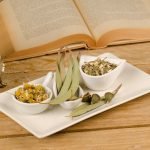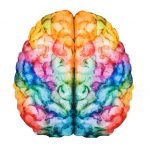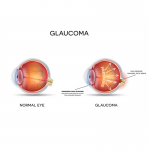Homeopathic Research Shows Potentized Remedies Have Varying Effect on Polarity of Molecules
Node Smith, ND
Homeopathic research is often contained within larger areas of study, such as water chemistry, or electromagnetics, and often extremely scientific. Sometimes it’s a little hard to follow, but it’s fascinating how potentized remedies interact with the physical properties around, or within them.
Study looks at how solvatochromic dyes might be affected when included in a potentized solution
A recent study looked at how solvatochromic dyes might be affected when included in a potentized solution.1 A solvatochromic dye is a substance that is able to change color depending on its polarity. Previous research has suggested that these dyes will react with potencies, and may allow for specific characteristics of potencies to be determined. The study took various potencies – up to an including a 50M – and compared them with controls when solvatochromic dyes were present.
Results of the study
The results of the study were clear that solvatochromic dyes are capable of demonstrating interactions with potencies. Specifically, amino acids that contain an aromatic bridge show optical changes when in the presence of potencies. These were changes not observed in control groups. Interactions observed through this research include a handful of molecular detectors that show significant interactions with homeopathic potencies. These are a large dipole moment, electron delocalization, polarizability, and molecular rigidity.
Conclusion of the research
The conclusion of the research is as follows: “Analysis of the optical changes occurring on interaction with potencies suggests that in all cases potencies increase the polarity of molecular detectors to a degree that correlates with the size of the compound’s permanent or ground dipole moment. These results can be explained by inferring that potencies themselves have polarity.”
Source:
- Cartwright SJ. Degree of Response to Homeopathic Potencies Correlates with Dipole Moment Size in Molecular Detectors: Implications for Understanding the Fundamental Nature of Serially Diluted and Succussed Solutions. Homeopathy. 2018;107(1):19-31.
Image Copyright: <a href=’https://www.123rf.com/profile_kerdkanno’>kerdkanno / 123RF Stock Photo</a>
 Node Smith, ND, is a naturopathic physician in Portland, OR and associate editor for NDNR. He has been instrumental in maintaining a firm connection to the philosophy and heritage of naturopathic medicine among the next generation of docs. He helped found the first multi-generational experiential retreat, which brings elders, alumni, and students together for a weekend camp-out where naturopathic medicine and medical philosophy are experienced in nature. Four years ago he helped found the non-profit, Association for Naturopathic ReVitalization (ANR), for which he serves as the board chairman. ANR has a mission to inspire health practitioners to embody the naturopathic principles through experiential education. Node also has a firm belief that the next era of naturopathic medicine will see a resurgence of in-patient facilities which use fasting, earthing, hydrotherapy and homeopathy to bring people back from chronic diseases of modern living; he is involved in numerous conversations and projects to bring about this vision.
Node Smith, ND, is a naturopathic physician in Portland, OR and associate editor for NDNR. He has been instrumental in maintaining a firm connection to the philosophy and heritage of naturopathic medicine among the next generation of docs. He helped found the first multi-generational experiential retreat, which brings elders, alumni, and students together for a weekend camp-out where naturopathic medicine and medical philosophy are experienced in nature. Four years ago he helped found the non-profit, Association for Naturopathic ReVitalization (ANR), for which he serves as the board chairman. ANR has a mission to inspire health practitioners to embody the naturopathic principles through experiential education. Node also has a firm belief that the next era of naturopathic medicine will see a resurgence of in-patient facilities which use fasting, earthing, hydrotherapy and homeopathy to bring people back from chronic diseases of modern living; he is involved in numerous conversations and projects to bring about this vision.










